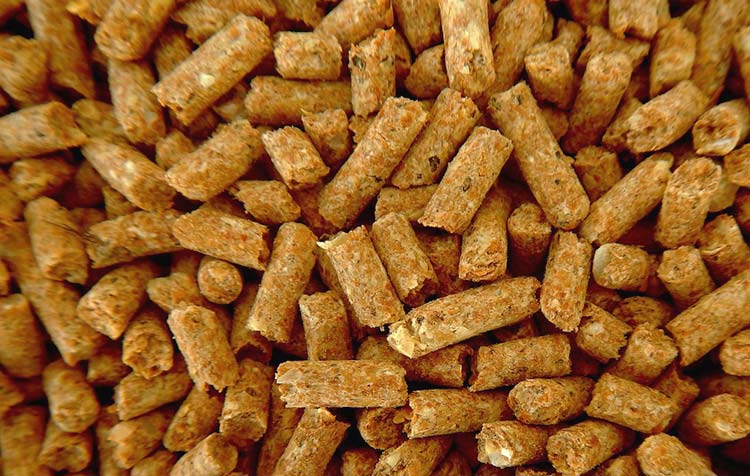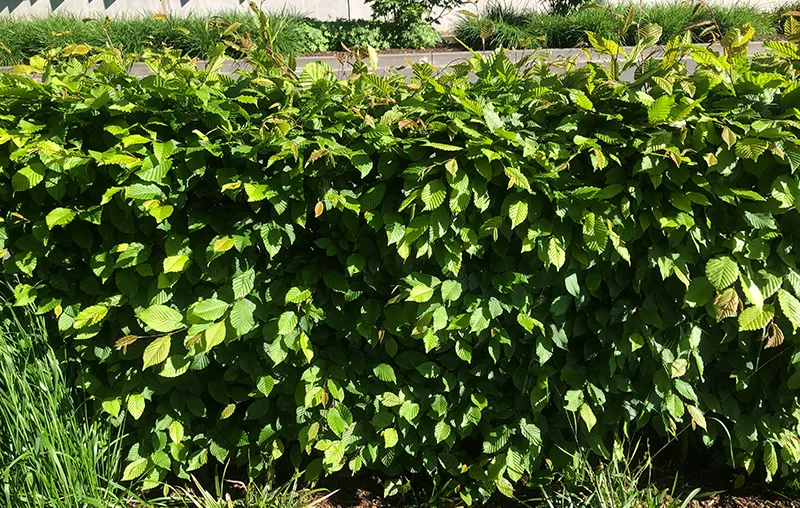How environmentally friendly is pellet heating and are the small wood pellets sustainable? If you're looking for an answer to these questions, you've come to the right place! Heating systems that run on fossil fuels are on the sidelines. Not only the resulting environmental damage, but also the planned rising CO2 price motivate more and more people to switch to more ecological alternatives. Wood heating systems such as pellet heating are definitely more environmentally friendly - but that alone does not automatically make them sustainable.
In diesem Artikel möchte ich dir alles Wissenswerte über die Nachhaltigkeit von Holzpellets mit an die Hand geben und erläutern, warum Verbraucher:innen bei einem Neubau oder einer Modernisierung der Heizungstechnik ganz genau hinsehen sollten. Auf geht's!
Here you can find a short overview in advance:
What are wood pellets and what is pellet heating?
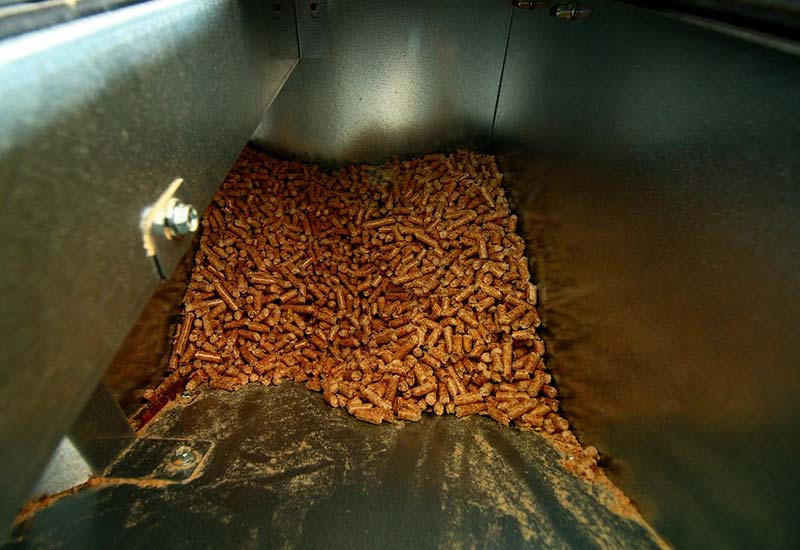
Before we get into the material and its sustainability, I would first like to define the terms or objects we are talking about here.
- Wood pellets: This refers to small wooden cylinders (up to 25 millimeters long and about 6 millimeters in diameter) that are usually made from sawmill by-products and industrial wood residues that cannot be used in any other way.
- Pellet heating: This term refers to a heat generator that obtains its energy for hot water and heating a building from burning wood. Thus, a pellet heating system uses the mentioned wood pellets as fuel.
What are wood pellets made of, how are they produced and used?
Certified wood pellets from Germany consist exclusively of from sawmill residues from garden and construction timber production₁, i.e. wood chips, sawdust and other residues.₁ Thus, no further trees need to be felled for the production of the fuel.
The chips will dried, ground, compacted and pressed into its familiar shape without the addition of glue or binders. The heat of the wood during compression in combination with the biopolymer lignin contained in the wood ensures that everything remains hard and in its shape in the cooled state. The resulting standardized wood pellets can then be used in designated pellet boilers or stoves, but not in classic wood stoves, for heat generation.
How does it work? You store a demand-based quantity of wood pellets in the storage tank of the heating system. This doses the wood pellets as needed and passes it on to the combustion boiler, where, controlled by an integrated thermostat, an automatic ignition process begins. The flame then heats the water serving as a heat reservoir for heating and hot water. A buffer tank (optional) can then also store the heat that is not needed in order to release it as required by the consumers:inside.
Are wood pellets sustainable?
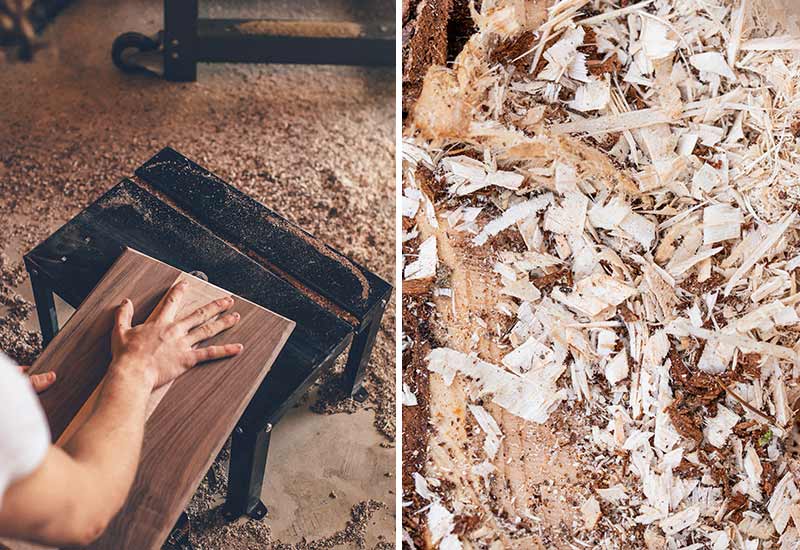
Now we come to the initial question: are wood pellets sustainable? Wood is a renewable raw material. So the tendency is clear. At first glance, the wood pellets even burn CO2-neutral, because the CO2 previously stored by the trees escapes in the combustion process and can be absorbed again by living trees.
However, the heating systems produce CO2 much faster than trees can absorb, which is why one cannot honestly speak of climate neutrality. Nevertheless, at 23 g/kWh, burning wood pellets in a pellet boiler has significantly lower CO2 emissions than natural gas and heating oil, for example. (318 g/kWh)₂ As long as you burn energy carriers, it is impossible to produce no emissions at all.
The facilities are quite energy efficient and usually receive the energy efficiency class A+ or in combination with a solar system on the roof, even A++. The wood pellets consist of otherwise unusable wood residues and Protect the forest ecosystem. However, the product is still indirectly dependent on the timber industry and continues to provide, at least indirectly, the Deforestation.
The raw material for certified wood pellets from Germany originates From the region and avoids long transport routes to the processing and consumption point. The pellets, which consist of sawmill residues, can therefore be recycled locally and obtained from material that would otherwise be waste. Pellet heating systems ultimately function not only with a renewable, but also with a Recycled, clean, lightweight fuel that can be stored in a space-saving manner.. Clear advantages over coal, oil and gas - but also over burning logs.
Do pellet heaters also have disadvantages?
Compared to conventional heating systems, the dependence on other industries is relatively low. Because even if you depend on the existence of wood residues, you are as a consumer:in independent of the significantly more fluctuating oil and gas prices. However, wood pellets can also be "hoarded", so that there are price differences from time to time. It should be noted, however, that the technology of pellet heating is only scalable to a limited extent, since there are not so many wood wastes that could be used to heat all households at some point in the future.
The other disadvantages are the large space requirement for storage, the comparatively high acquisition costs and the high Cleaning and maintenance effort. However, these aspects also apply to most other heating technologies. As a result, and compared to conventional heating methods, I would conclude that wood pellets are sustainable.
Clear cutting for wood pellets
There is one more rather alarming drawback... The European Union has the Wood combustion for energy production declared as climate-neutral and sustainable - and also generously subsidizes a corresponding conversion with almost 30 billion euros per year. This is intended to minimize dependence on fossil fuels from abroad. Due to the war in Russia, among other things, wood is particularly lucrative as a fuel (for example, there are also no taxes to pay for CO2 emissions) - which is why more and more coal-fired power plants are switching to wood. All this is not without consequences.
In fact, about half of the European timber harvest is now burned. By comparison, in 2005 the figure was still five percent. Instead of healthy thinning, entire clearcuts are now taking place in Romanian forests, for example, where hardly any trees are left standing.₃
How can you recognize sustainable wood pellets?
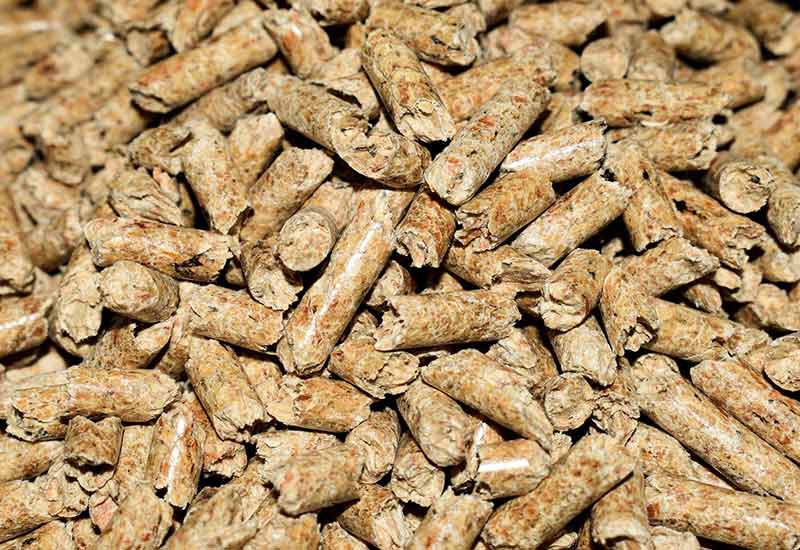
Was kann man jetzt als Verbraucher:in tun? Zunächst einmal rate ich dir, immer Handbücher und Ratgeber zu nutzen und dich vor der Beschaffung genau darüber zu informieren, was du da kaufst. Denn Holzpellets sind nicht gleich Holzpellets. Sie unterscheiden sich beispielsweise hinsichtlich ihres Heizwerts, Durchmessers, Schadstoffgehalts oder ihrer Herkunft.
To ensure that you use the most sustainable energy source possible, I have listed below how you can recognize high-quality and environmentally friendly wood pellets:
On the product
- ENPlus seal: The quality assurance system (originally started by the German Pellets Institute, now run by European Pellet Council (EPC) The company certifies wood pellets in the quality levels A1, A2 and B and monitors the supply chain from production and trade to delivery to the customer. Producers must meet crystal-clear quality criteria and document where the wood used comes from. It is the first indication of wood pellets produced as sustainably as possible.
- DINPlus seal: The DIN German Institute for Standardization e.V. and the TÜV Rheinland Group have defined clear quality standards for wood pellets. The DINPlus seal confirms compliance with these characteristics for corresponding products.
- PEFC certificate: Wood products with the PEFC seal of approval demonstrably originate from socially sustainable forestry.
- FSC Seal: The well-known environmental seal of the Forest Stewardship Council can be used to identify whether a particular wood product originates from sustainable forestry.
On material
- Appearance: The surface is shiny and the wood pellets are not curved.
- Drought: High quality wood pellets are not moist, but dry.
- Strength: When pressed on it, pellets with high quality should be quite stable and not break easily. The breaking point should also not crumble and not fray.
- Burning behavior: The resulting ash (cannot be completely avoided) may only begin to melt at a temperature of 1,200 degrees Celsius.₄
Wood pellets are sustainable with limitations
Fuel from sawmill by-products is definitely an environmentally friendly alternative compared to conventional heart technologies based on fossil fuels. After all, it is a recycled, renewable raw material that emits significantly less CO2 when burned and reduces the climate change decelerated. But it also brings new problems.
My opinion: Comparatively speaking, wood pellets are sustainable. However, if you want to avoid emissions altogether and still more sustainable heating wants, can switch to emission-free technologies such as the geothermal heat pump in combination with a solar thermal system.
I hope that I could help you with this blog article. Do you have any questions, tips or experiences regarding the sustainability of a pellet heating system? Then I look forward to your comments.
Stay sustainable,

PS.: I have also given you a detailed post on the subject of "Building Sustainably" written. Take a look now and use the tips for your house construction or a possible modernization.
References:
₁ Thumm Wärmekonzepte: Are pellets sustainable? Experts answer, YouTube, 30.09.2021, Web, 28.11.2022 at 08:32, in: https://www.youtube.com/watch?v=vof-v0CN5B0.
₂ Finanztip: Pellet heating: costs, subsidies, advantages & disadvantages, YouTube, 02.09.2022, web, 28.11.2022 at 09:16, in: https://www.youtube.com/watch?v=AzqQuQWZR-s.
₃ C. Kruchem: Clear-cutting in Europe's Forests The Fatal Business with Wood Pellets (as of Nov. 22, 2022), available at https://www.deutschlandfunkkultur.de/holzpellets-geschaeft-europa-waelder-wald-100.html. [13.12.2022].
₄ UNITED NEWS NETWORK GmbH: TÜV Rheinland -Inferior wood pellets can block heating system (as of Nov. 23, 2022), available at https://www.pressebox.de/pressemitteilung/tuev-rheinland/TUeV-Rheinland-Minderwertige-Holzpellets-koennen-Heizsystem-blockieren/boxid/1031266 [Nov. 28, 2022].

